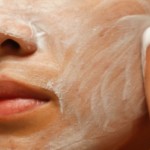How to get rid of forehead wrinkles fast
- Category: Skin
- Reply to post
4 Ways to Reduce Forehead Wrinkles
1. Injectable Collagen
Injectable collagen is considered safe for use in just about every area of your face. While very effective for reducing the appearance of fine lines, injectable collagen is also an effective treatment for folds and creases around your forehead. These injections are done in your doctor’s office and they can be repeated every two to four months, according to the University of Maryland Medical Center. According to the U.S. Food and Drug Administration, the effects of collagen injections can be expected to last for three to four months. If your facial depressions or wrinkles are deep, you may require more than one injection, according to Novant Health.
Medical Considerations
- There are minimal side effects associated with collagen injections, but before you decide to proceed, collagen allergy testing should be done.
- After treatment, there may be slight bruising, redness, or itching, according to The American Society for Aesthetic Plastic Surgery.
- Risks from collagen injections may include infection, abscesses, lumpiness, skin peeling, scarring, and open sores, according to the American Society of Plastic Surgeons.
Following Treatment
After your treatment, the inflammation and bruising you experience may last for 24 hours. Redness, however, may last anywhere from a day to one week. While you can apply makeup at anytime after your treatment, avoid rubbing the newly treated area. In addition, you should avoid strenuous exercise, alcohol consumption, and sun exposure during the first week following your injection, according to Sonata Aesthetics.
2. Laser Treatments
Laser resurfacing treatments can reduce dermal irregularities and skin wrinkles. Concentrated beams of light are aimed at the affected area, removing wrinkled skin in layers. Also known as a laser peel, laser resurfacing works well to eliminate lines or wrinkles around your mouth or eyes, and on your forehead. According to Clariday Aesthetics, the improvement from laser resurfacing will last for years with good skin care such as using skin care products, sunscreens, and getting only moderate sun exposure.
Medical Considerations
Before considering laser resurfacing treatments for your forehead wrinkles, consult with a dermatologist or plastic surgeon to determine if you are an appropriate candidate.
- Your doctor may advise you to avoid medications or dietary supplements such as ibuprofen, aspirin, or vitamin E, which can interfere with blood clotting, for about ten days before your treatments.
- If you are taking prescription anticoagulant medication, talk to your prescribing physician before considering laser treatments because it may not be appropriate for you to discontinue these medications abruptly.
- If your skin is very dark, or if you have acne, laser treatments may not be appropriate for you, according to WebMD.
Following Treatment
After your treatment, your skin may be raw, itchy, and inflamed. You may also notice a yellow liquid coming from the treated area, which will eventually form crusts. Medicated ointment will be applied, and covered with an airtight bandage, according to the Mayo Clinic. Taking an over-the-counter pain reliever, such as acetaminophen, and applying ice packs to the affected area can help minimize discomfort and swelling. You can resume your normal activities and apply make-up immediately after the procedure.
3. BOTOX®
Injections of the botulinum toxin can reduce the appearance of forehead furrows, crows feet, and frown lines. Commonly known as BOTOX®, botulinum toxin injections block muscular nerve signals, weakening the muscle so that it is unable to contract, which helps diminish your facial wrinkles, according to PlasticSurgery.org, the medical website affiliated with the American Society of Plastic Surgeons. The effects of BOTOX® injections last four to six months, according to WebMD. In an article on the website for The Dr. Oz Show, Dr. Arthur Perry, MD, FACS states that treating horizontal forehead lines typically requires between ten and 20 units of BOTOX®.
Medical Considerations
BOTOX® injections should only be used under a physician’s care. If your doctor is not comfortable administering the injections, ask for a referral to a doctor who specializes in BOTOX® injections.
- Before your doctor injects the actual BOTOX®, he will administer an anesthetic medication to the area so that you won’t feel the injections.
- A very tiny needle is then used to inject small amounts of the botulinum toxin into your muscles or skin.
Following Treatment
You can resume your normal activities after the injections, but make sure you don’t rub the treated area to ensure that the toxin does not travel to other areas of your face. You’ll notice results after a few days. According to RXList.com, local reactions to botulinum toxin injections include redness at the injection site, bruising, bleeding, and inflammation. Gently applying an ice pack to the treated area can help minimize local reactions such as swelling and mild discomfort.
Possible Side Effects
While considered safe when administered by an experienced doctor, BOTOX® injections can cause side effects. According to Mayo Clinic, problems can occur if the injections are incorrectly placed and the medication spreads into adjacent tissues. These adverse reactions include:
- Eyelid droop
- Crooked eyebrows
- Crooked smile
- Excessive tearing or dry eyes
4. Home Remedies
While injections and laser treatments may provide you with a more dramatic reduction in your forehead wrinkles, simple home remedies can help soften them.
- Drinking plenty of water keeps your skin moisturized so that it maintains its suppleness and elasticity, according to ShareCare.com.
- Apply a mixture of milk and honey to your forehead. These foods have anti-wrinkle properties, according to Natural News.
- It’s also important to smile more. According to Murad.com, frowning can cause forehead wrinkles and a furrowed brow because of the repetitiveness of the motion. This means being happy and smiling often can help you stay wrinkle-free!
Weigh Your Options
Regardless of whether you choose injections, laser treatments, surgery, or home remedies to treat your forehead wrinkles, weigh your options carefully. Take into consideration your general state of health, your finances, whether you want temporary or long-term effects, and whether or not you can keep up with follow-up treatments. You and your health care provider can determine which options are appropriate for your individual situation.














